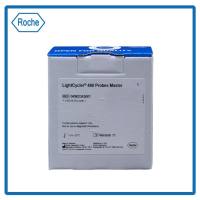End-Labeling of DNA Probes
互联网
631
End-labeling is a rapid and sensitive method for radioactively, or nonisotopically, labeling DNA fragments and is useful for visualizing small amounts of DNA. End-labeling can also be used to label fragments at one end. All of the enzymes employed are specific to either the 3′ or 5′ termini of DNA and will, consequently, only incorporate label once per DNA strand. If double-stranded DNA is used, both ends are labeled, but single end-labeled fragments can be produced by further restriction enzyme digestion. This works well with DNA fragments cloned into polylinkers, as one labeled end can be removed as a tiny DNA fragment, making subsequent purification easier. Such single end-labeled molecules can be used to order restriction enzyme fragments and are a prerequisite for Maxam-Gilbert DNA sequencing (1 ). End-labeled synthetic oligonucleotides have numerous applications, including sequence specific probes (2 ), gel retardation and Southwestern assays (3 ), and sequencing polymerase chain reaction (PCR) products (4 ).









